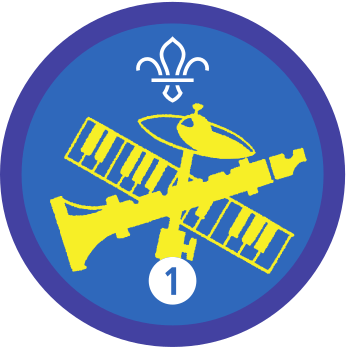Buzzing chords
Before you begin
- Use the safety checklist to help you plan and risk assess your activity. Additional help to carry out your risk assessment, including examples can be found here. Don’t forget to make sure all young people and adults involved in the activity know how to take part safely.
- Make sure you’ll have enough adult helpers. You may need some parents and carers to help if you’re short on helpers
Vocal warm-ups
- Gather everyone in a circle.
- Have a chat with everyone about how the voice is an instrument, and just like playing the piano or guitar, anyone can use their voice to make music.
- Ask if anyone has ever shouted or screamed for a long time? How did their voice feel afterwards?
- Explain that when we speak, different tones and noises come out of our mouths. Music tries to convert these tones into symbols, such as musical notes, so that everyone can understand and play them.
- Tell everyone that by using this system, we can repeat series of notes and combine them in specific ways, making up songs.
- Explain that it’s important to look after your voice. Shouting can strain it and so can singing for a long time. To help avoid hurting your voice, it's important to warm up before doing a lot of singing. Vocal warm-ups are gentle exercises to start using your voice to help prepare you for singing.
- Have a go at the vocal warm up exercises. You could try the ones we have provided in the accordions at the bottom of this page. You might also want to ask anyone if they know any already or you could find your own.
- Imagine there's a bee buzzing around the other side of the room. What sound would the bee make? Get the group to start making a quiet buzzing sound.
- The bee's getting closer to them. The buzzing sound should start to get louder.
- The bee starts flying up and down in front of them. As on a scale, the buzzing noise sounds lower, when the ‘bee’ is closer to the ground. The buzzing gets higher when the ‘bee’ goes up.
- They see the bee in front of them and catch it in their hands. What would the bee sound like? They cup their hands together and start making a low buzzing sound.
- The bee escapes, so they all have to open their hands while loudly doing a surprised/confused noise, such as ‘HUUUUH?’
- Then they realise the bee is happy and safe buzzing away, so they're all relieved, and with a relaxed, open mouth say ‘Aaaaahhh…’
- Explain to everyone that they're going to have a go at scales by copying a series of phrases and raising the pitch each time.
- Demonstrate the following phrase “MAAA, MEEE, MYYY, MOOO, MUUU”.
- The pitch of the phrase gets higher then lower, so you should start on MAAA, go up to MYYY, and then back down to MUUU.
- MAAA and MUUU should be the same. MEEE and MOOO should be the same. MYYY should be the highest pitch. Ask everyone to have a go at the phrase.
- Next, complete the same phrase and pattern, but raise the pitch of the starting note. This'll mean the whole phrase is sang at a higher pitch.
- Complete this step multiple times, but also try going down in pitch to make the phrase lower.
- Finally, change the consonant at the start of the phrase to warm up different muscles in your mouth. For example; “TAAA, TEEE, TYYY, TOOO, TUUUU” or “LAAA, LEEE, LYYY, LOOO, LUUU”
Reflection
This activity gave everyone the opportunity to try something new and develop your skills. Most people have done some singing before, but have you warmed up your vocal cords before? How did it feel to do these warm-ups?
Do you think it could help you in the future? Vocal warm-ups can also be done with a musical instrument to copy the pitch.
Does anyone play an instrument? If so do you do any warm-ups before playing the instrument? Can you play a scale for everyone to sing alongside and warm-up to?
Safety
All activities must be safely managed. You must complete a thorough risk assessment and take appropriate steps to reduce risk. Use the safety checklist to help you plan and risk assess your activity. Always get approval for the activity, and have suitable supervision and an InTouch process.
To make it harder, you can make the scales very high or very low. Assigning notes to the scales can make it harder, but can also introduce the relation between the sound and the note.
Make it accessible
All Scout activities should be inclusive and accessible.
If there's someone skilled in playing an instrument, they could bring it with them and play along with the scales.
